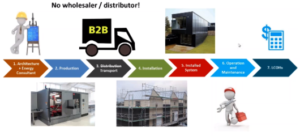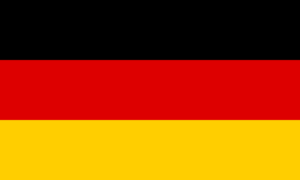IEA SHC: Industry Invited to Join Research Community for Lower Solar Heat Costs
October 12, 2015
 Driving down the costs of solar thermal systems is not only about cheaper collector production. In fact, post-production processes, such as sales, installation and maintenance account for up to 50 % of the price the end customer will have to pay. The new IEA SHC Task 54, Price Reduction of Solar Thermal Systems, wants to investigate those factors and find ways to reduce system costs. The kick-off meeting on 21 to 22 October will be hosted by Fraunhofer ISE in Freiburg, Germany. Researchers and industry representatives from all over the world have been invited to participate. The task spans over three years and includes on average two two-day experts meetings per year.
Driving down the costs of solar thermal systems is not only about cheaper collector production. In fact, post-production processes, such as sales, installation and maintenance account for up to 50 % of the price the end customer will have to pay. The new IEA SHC Task 54, Price Reduction of Solar Thermal Systems, wants to investigate those factors and find ways to reduce system costs. The kick-off meeting on 21 to 22 October will be hosted by Fraunhofer ISE in Freiburg, Germany. Researchers and industry representatives from all over the world have been invited to participate. The task spans over three years and includes on average two two-day experts meetings per year. The great reductions in material costs have had little effect on consumer prices for the entire solar system, as shown by Fraunhofer ISE market studies carried out within the framework of Task 39, Polymeric Materials for Solar Thermal Applications, which ended in October 2014. “In IEA SHC Task 39, we learned that polymers offer many new opportunities, but they cannot solve all of the cost problems that solar heat has. In Task 54, we will also have to look at the distribution channels, installation and maintenance costs,” says the leader of Subtask D (Information, dissemination and stakeholder involvement) of the new task, Sandrin Saile from the Service Life Analysis Group of the Fraunhofer Institute for Solar Energy Systems. The IEA SHC Task 54 will be coordinated by Michael Köhl of the Service Life Analysis Group. The researcher emphasised that a “comprehensive approach covering all aspects of the value chain” was needed to achieve significant cost reductions. Fraunhofer ISE will host the kick-off meeting for the new task in Freiburg on 21 and 22 October (see the attached agenda).
A lot of market research needs to be done to identify opportunities for cost saving potential in post-production processes. “We want to look at markets with high potential for solar thermal. Then, we plan to define typical reference systems for the different regions and applications, e.g. pumped systems with flat plate collectors for Europe or thermosiphon systems for the MENA region,” Saile says. Such systems are intended to be used by the researchers first to establish cost benchmarks and second to look for ways to reduce the purchase price by up to 40 %. An increased incorporation of standardised and mass-produced components (such as connection sets) and more plug-and-play in system installations are two of the ideas to achieve such an ambitious goal. Additionally, the researchers will explore ways to make solar thermal more attractive by improving marketing campaigns and turning to consumer-oriented design.
Task requires industry partner support
This type of work makes industry partners all the more important. “Wherever they may be located around the world, all companies and organisations with projects in this field should contribute their ideas on the price reduction of solar thermal systems and are invited to attend,” says Köhl. He has invited the kick-off meeting participants to prepare a short presentation (10 minutes) on the background of their company or organisation and their experiences and expertise they bring into Task 54. Many members of the recently finished Task 39 are now also part of Task 54, such as Norwegian solar collector manufacturer Aventa, Austrian material specialists from the University of Linz and system experts from the University of Stuttgart. The subtasks have already been specified, as well as their heading agents (see the attached agenda), but there is still a lot of room for the ideas of task participants.
More information:
Task 54 website: task54.iea-shc.org/
For more details, you can write an email to: sandrin.saile@ise.fraunhofer.de


